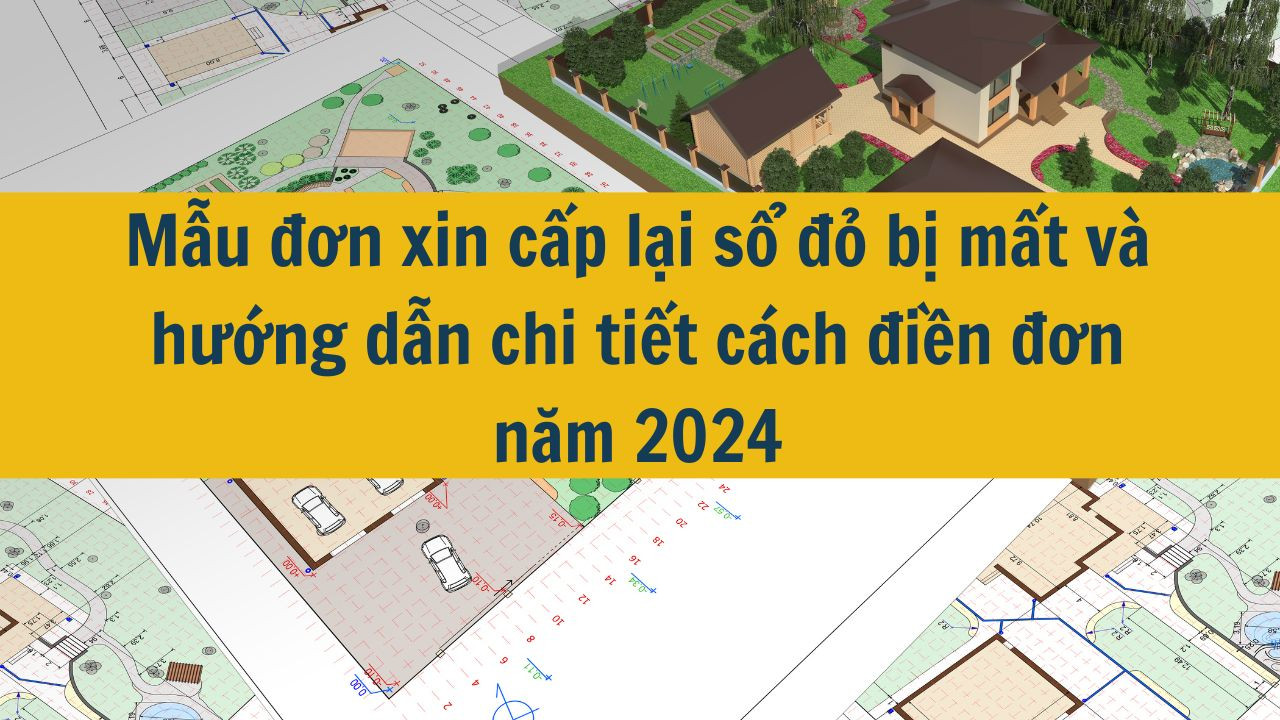 Tìm kiếm
Tìm kiếm
Chương III Nghị định 43/2014/NĐ-CP: Quy hoạch, kế hoạch sử dụng đất
| Số hiệu: | 43/2014/NĐ-CP | Loại văn bản: | Nghị định |
| Nơi ban hành: | Chính phủ | Người ký: | Nguyễn Tấn Dũng |
| Ngày ban hành: | 15/05/2014 | Ngày hiệu lực: | 01/07/2014 |
| Ngày công báo: | 04/06/2014 | Số công báo: | Từ số 561 đến số 562 |
| Lĩnh vực: | Bất động sản | Tình trạng: |
Hết hiệu lực
01/08/2024 |
TÓM TẮT VĂN BẢN
Tiếp tục thu hồi đất dự án trước 01/07/2014
Trung tuần tháng 05 vừa qua, Chính phủ đã ban hành quy định chi tiết thi hành một số điều của Luật đất đai thông qua Nghị định 43/2014/NĐ-CP.
Theo đó, UBND tỉnh có trách nhiệm rà soát và xử lý việc thu hồi đất để thực hiện dự án đầu tư như sau:
Tiếp tục cho phép thực hiện những dự án đã có văn bản chấp thuận đầu tư hoặc thông báo thu hồi gửi đến từng người có đất bị thu hồi hay văn bản cho phép chủ đầu tư thỏa thuận với người có đất bị thu hồi được ban hành trước ngày 01/07/2014.
Riêng đối với những dự án thỏa điểu kiện trên nhưng không phù hợp với kế hoạch sử dụng đất hằng năm cấp huyện thì sẽ bị hủy bỏ.
Những dự án thuộc diện được phép thu hồi đất nhưng chủ đầu tư không thể thỏa thuận được với người sử dụng đất thì UBND sẽ trực tiếp thu hồi phần diện tích đó.
Nghị định này có hiệu lực từ ngày 01/07/2014 và thay thế những nghị định cũ như 181/2004/NĐ-CP, 84/2007/NĐ-CP, 88/2009/NĐ-CP ...
Văn bản tiếng việt
Văn bản tiếng anh
1. Trách nhiệm xác định nhu cầu sử dụng đất trong việc lập, điều chỉnh quy hoạch, kế hoạch sử dụng đất cấp quốc gia được quy định như sau:
a) Các Bộ, ngành xác định nhu cầu sử dụng đất và đề xuất các dự án của ngành, lĩnh vực phụ trách theo từng đơn vị hành chính cấp tỉnh; Ủy ban nhân dân cấp tỉnh xác định nhu cầu sử dụng đất của địa phương;
b) Các Bộ, ngành và Ủy ban nhân dân cấp tỉnh gửi nhu cầu sử dụng đất về Bộ Tài nguyên và Môi trường trong thời hạn 45 ngày kể từ ngày nhận được văn bản của Bộ Tài nguyên và Môi trường về việc đề nghị đăng ký nhu cầu sử dụng đất;
c) Bộ Tài nguyên và Môi trường tổng hợp, cân đối nhu cầu sử dụng đất và dự kiến phân bổ các chỉ tiêu sử dụng đất cấp quốc gia đến từng vùng kinh tế - xã hội và đơn vị hành chính cấp tỉnh.
2. Quy hoạch, kế hoạch sử dụng đất cấp tỉnh:
a) Trách nhiệm xác định nhu cầu sử dụng đất trong việc lập, điều chỉnh quy hoạch, kế hoạch sử dụng đất cấp tỉnh:
Các sở, ngành xác định nhu cầu sử dụng đất và đề xuất các dự án sử dụng đất thuộc chỉ tiêu sử dụng đất cấp tỉnh theo từng đơn vị hành chính cấp huyện; Ủy ban nhân dân cấp huyện xác định nhu cầu sử dụng đất của địa phương.
Các sở, ngành và Ủy ban nhân dân cấp huyện gửi nhu cầu sử dụng đất về Sở Tài nguyên và Môi trường trong thời hạn 30 ngày kể từ ngày nhận được văn bản của Sở Tài nguyên và Môi trường về việc đề nghị đăng ký nhu cầu sử dụng đất.
Sở Tài nguyên và Môi trường dự kiến phân bổ các chỉ tiêu sử dụng đất cấp quốc gia và xác định danh mục các dự án trong quy hoạch, kế hoạch sử dụng đất cấp quốc gia đến từng đơn vị hành chính cấp huyện; tổng hợp, cân đối nhu cầu sử dụng đất và dự kiến phân bổ các chỉ tiêu sử dụng đất cấp tỉnh đến từng đơn vị hành chính cấp huyện.
b) Chỉ tiêu sử dụng đất trong quy hoạch sử dụng đất cấp tỉnh gồm chỉ tiêu sử dụng đất theo loại đất và chỉ tiêu sử dụng đất theo khu chức năng.
Chỉ tiêu sử dụng đất theo loại đất gồm chỉ tiêu sử dụng đất theo loại đất do quy hoạch sử dụng đất cấp quốc gia phân bổ cho cấp tỉnh và chỉ tiêu sử dụng đất theo loại đất do cấp tỉnh xác định. Chỉ tiêu sử dụng đất theo loại đất do cấp tỉnh xác định gồm đất trồng cây lâu năm; đất trồng cây hàng năm khác; đất ở tại nông thôn; đất ở tại đô thị; đất xây dựng trụ sở cơ quan; đất xây dựng trụ sở của tổ chức sự nghiệp; đất xây dựng cơ sở ngoại giao; đất cụm công nghiệp; đất thương mại, dịch vụ; đất cơ sở sản xuất phi nông nghiệp; đất sử dụng cho hoạt động khoáng sản; đất phát triển hạ tầng cấp tỉnh; đất cơ sở tôn giáo; đất làm nghĩa trang, nghĩa địa, nhà tang lễ, nhà hỏa táng.
Chỉ tiêu sử dụng đất theo khu chức năng gồm khu sản xuất nông nghiệp; khu lâm nghiệp; khu bảo tồn thiên nhiên và đa dạng sinh học; khu phát triển công nghiệp; khu đô thị; khu thương mại - dịch vụ; khu dân cư nông thôn.
c) Trong trường hợp cần thiết mà phải thay đổi về quy mô, địa điểm và số lượng dự án, công trình trong cùng một loại đất nhưng không làm thay đổi về chỉ tiêu và khu vực sử dụng đất theo chức năng sử dụng trong quy hoạch sử dụng đất đã được phê duyệt thì Ủy ban nhân dân cấp tỉnh có trách nhiệm trình Hội đồng nhân dân cùng cấp thông qua, chỉ đạo cập nhật vào quy hoạch, kế hoạch sử dụng đất cấp huyện để tổ chức thực hiện.
3. Quy hoạch, kế hoạch sử dụng đất cấp huyện:
a) Trách nhiệm xác định nhu cầu sử dụng đất trong việc lập, điều chỉnh quy hoạch, kế hoạch sử dụng đất cấp huyện:
Các phòng, ban cấp huyện xác định nhu cầu sử dụng đất và đề xuất các dự án sử dụng đất thuộc danh mục chỉ tiêu sử dụng đất cấp huyện theo từng đơn vị hành chính cấp xã; Ủy ban nhân dân xã, phường, thị trấn (sau đây gọi là Ủy ban nhân dân cấp xã) xác định nhu cầu sử dụng đất của địa phương.
Các phòng, ban cấp huyện và Ủy ban nhân dân cấp xã gửi nhu cầu sử dụng đất về Phòng Tài nguyên và Môi trường trong thời hạn 30 ngày kể từ ngày nhận được văn bản của Phòng Tài nguyên và Môi trường về việc đề nghị đăng ký nhu cầu sử dụng đất.
Phòng Tài nguyên và Môi trường xác định các chỉ tiêu sử dụng đất cấp tỉnh và các dự án trong quy hoạch, kế hoạch sử dụng đất cấp tỉnh đã phân bổ cho cấp huyện đến từng đơn vị hành chính cấp xã; tổng hợp, cân đối nhu cầu sử dụng đất và dự kiến phân bổ các chỉ tiêu sử dụng đất cấp huyện đến từng đơn vị hành chính cấp xã.
b) Chỉ tiêu sử dụng đất trong quy hoạch sử dụng đất cấp huyện gồm chỉ tiêu sử dụng đất theo loại đất và chỉ tiêu sử dụng đất theo khu chức năng.
Chỉ tiêu sử dụng đất theo loại đất gồm chỉ tiêu sử dụng đất theo loại đất do quy hoạch sử dụng đất cấp tỉnh phân bổ cho cấp huyện và chỉ tiêu sử dụng đất theo loại đất do cấp huyện, cấp xã xác định. Chỉ tiêu sử dụng đất theo loại đất do cấp huyện, cấp xã xác định gồm đất nông nghiệp khác; đất sản xuất vật liệu xây dựng, làm đồ gốm; đất phát triển hạ tầng cấp huyện, cấp xã; đất sinh hoạt cộng đồng, khu vui chơi, giải trí công cộng; đất tín ngưỡng; đất sông, ngòi, kênh, rạch, suối và mặt nước chuyên dùng; đất phi nông nghiệp khác.
Chỉ tiêu sử dụng đất theo khu chức năng gồm khu vực chuyên trồng lúa nước; khu vực chuyên trồng cây công nghiệp lâu năm; khu vực rừng phòng hộ, rừng đặc dụng, rừng sản xuất; khu công nghiệp, cụm công nghiệp; khu đô thị - thương mại - dịch vụ; khu du lịch; khu ở, làng nghề, sản xuất phi nông nghiệp nông thôn.
4. Trong quá trình tổ chức lập quy hoạch, kế hoạch sử dụng đất quốc phòng, an ninh, Bộ Quốc phòng, Bộ Công an có trách nhiệm phối hợp với Ủy ban nhân dân cấp tỉnh xác định vị trí, diện tích các loại đất sử dụng vào mục đích quốc phòng, an ninh quy định tại Điều 61 của Luật Đất đai tại địa phương.Bổ sung
5. Bộ Tài nguyên và Môi trường quy định chi tiết về trình tự, nội dung lập, điều chỉnh quy hoạch, kế hoạch sử dụng đất.Bổ sung
1. Hồ sơ lấy ý kiến về quy hoạch, kế hoạch sử dụng đất cấp quốc gia, cấp tỉnh và cấp huyện gồm:
a) Báo cáo tóm tắt quy hoạch, kế hoạch sử dụng đất, trong đó có các chỉ tiêu sử dụng đất, danh mục dự án, công trình dự kiến thực hiện trong kỳ quy hoạch, kế hoạch sử dụng đất;
b) Bản đồ quy hoạch, kế hoạch sử dụng đất.
2. Báo cáo tổng hợp, tiếp thu, giải trình ý kiến của nhân dân về quy hoạch, kế hoạch sử dụng đất được công khai trên trang thông tin điện tử của Bộ Tài nguyên và Môi trường, Tổng cục Quản lý đất đai đối với cấp quốc gia; trang thông tin điện tử của Ủy ban nhân dân cấp tỉnh đối với quy hoạch, kế hoạch sử dụng đất cấp tỉnh và trên trang thông tin điện tử của Ủy ban nhân dân cấp huyện đối với quy hoạch, kế hoạch sử dụng đất cấp huyện.
3. Việc lấy ý kiến Ủy ban nhân dân cấp tỉnh đối với quy hoạch, kế hoạch sử dụng đất quốc phòng, an ninh được quy định như sau:
a) Bộ Quốc phòng, Bộ Công an gửi hồ sơ lấy ý kiến về dự thảo phương án quy hoạch, kế hoạch sử dụng đất quốc phòng, an ninh cho Ủy ban nhân dân cấp tỉnh. Trong thời gian 30 ngày kể từ ngày nhận được hồ sơ, Ủy ban nhân dân cấp tỉnh có trách nhiệm góp ý kiến và gửi về Bộ Quốc phòng, Bộ Công an;
b) Bộ Quốc phòng, Bộ Công an tổng hợp, tiếp thu, giải trình ý kiến của Ủy ban nhân dân cấp tỉnh và hoàn thiện phương án quy hoạch, kế hoạch sử dụng đất trước khi trình Chính phủ phê duyệt.
1. Trình tự thủ tục thẩm định, phê duyệt quy hoạch, kế hoạch sử dụng đất cấp tỉnh:
a) Ủy ban nhân dân cấp tỉnh gửi hồ sơ quy hoạch, kế hoạch sử dụng đất đến Bộ Tài nguyên và Môi trường để tổ chức thẩm định;
b) Trong thời hạn không quá 05 ngày kể từ ngày nhận đủ hồ sơ hợp lệ, Bộ Tài nguyên và Môi trường có trách nhiệm gửi hồ sơ quy hoạch, kế hoạch sử dụng đất đến các thành viên của Hội đồng thẩm định quy hoạch, kế hoạch sử dụng đất để lấy ý kiến;
c) Trường hợp cần thiết, trong thời hạn không quá 10 ngày kể từ ngày nhận đủ hồ sơ hợp lệ, Hội đồng thẩm định quy hoạch, kế hoạch sử dụng đất tổ chức kiểm tra, khảo sát thực địa các khu vực dự kiến chuyển mục đích sử dụng đất, đặc biệt là khu vực chuyển mục đích sử dụng đất trồng lúa, đất rừng phòng hộ, đất rừng đặc dụng;
d) Trong thời hạn không quá 15 ngày kể từ ngày nhận được hồ sơ hợp lệ, các thành viên Hội đồng thẩm định quy hoạch, kế hoạch sử dụng đất gửi ý kiến góp ý bằng văn bản đến Bộ Tài nguyên và Môi trường;
đ) Trong thời hạn không quá 10 ngày kể từ ngày kết thúc thời hạn lấy ý kiến góp ý, Bộ Tài nguyên và Môi trường có trách nhiệm tổ chức họp Hội đồng thẩm định quy hoạch, kế hoạch sử dụng đất và gửi Thông báo kết quả thẩm định quy hoạch, kế hoạch sử dụng đất đến Ủy ban nhân dân cấp tỉnh;
e) Ủy ban nhân dân cấp tỉnh hoàn chỉnh hồ sơ quy hoạch, kế hoạch sử dụng đất; trình Hội đồng nhân dân cấp tỉnh thông qua; gửi hồ sơ quy hoạch, kế hoạch sử dụng đất đến Bộ Tài nguyên và Môi trường để trình phê duyệt;
g) Trong thời hạn không quá 10 ngày kể từ ngày nhận đủ hồ sơ hợp lệ Bộ Tài nguyên và Môi trường trình Chính phủ phê duyệt quy hoạch, kế hoạch sử dụng đất cấp tỉnh.
2. Trình tự thủ tục thẩm định, phê duyệt quy hoạch sử dụng đất cấp huyện:
a) Ủy ban nhân dân cấp huyện gửi hồ sơ quy hoạch sử dụng đất đến Sở Tài nguyên và Môi trường để tổ chức thẩm định;
b) Trong thời hạn không quá 05 ngày kể từ ngày nhận đủ hồ sơ hợp lệ, Sở Tài nguyên và Môi trường có trách nhiệm gửi hồ sơ quy hoạch sử dụng đất đến các thành viên của Hội đồng thẩm định quy hoạch, kế hoạch sử dụng đất để lấy ý kiến;
c) Trường hợp cần thiết, trong thời hạn không quá 10 ngày kể từ ngày nhận đủ hồ sơ hợp lệ, Hội đồng thẩm định quy hoạch, kế hoạch sử dụng đất tổ chức kiểm tra, khảo sát thực địa các khu vực dự kiến chuyển mục đích sử dụng đất, đặc biệt là khu vực chuyển mục đích sử dụng đất trồng lúa, đất rừng phòng hộ, đất rừng đặc dụng;
d) Trong thời hạn không quá 15 ngày kể từ ngày nhận được hồ sơ hợp lệ, các thành viên Hội đồng thẩm định quy hoạch, kế hoạch sử dụng đất gửi ý kiến góp ý bằng văn bản đến Sở Tài nguyên và Môi trường;
đ) Trong thời hạn không quá 10 ngày kể từ ngày kết thúc thời hạn lấy ý kiến góp ý, Sở Tài nguyên và Môi trường có trách nhiệm tổ chức họp Hội đồng để thẩm định quy hoạch sử dụng đất và gửi Thông báo kết quả thẩm định quy hoạch sử dụng đất đến Ủy ban nhân dân cấp huyện;
e) Ủy ban nhân dân cấp huyện hoàn chỉnh hồ sơ quy hoạch sử dụng đất; trình Hội đồng nhân dân cấp huyện thông qua; gửi hồ sơ quy hoạch sử dụng đất đến Sở Tài nguyên và Môi trường để trình phê duyệt;
g) Trong thời hạn không quá 10 ngày kể từ ngày nhận đủ hồ sơ hợp lệ Sở Tài nguyên và Môi trường trình Ủy ban nhân dân cấp tỉnh phê duyệt quy hoạch sử dụng đất cấp huyện.
3. Trình tự thủ tục thẩm định, phê duyệt điều chỉnh quy hoạch, kế hoạch sử dụng đất cấp tỉnh thực hiện theo quy định tại Khoản 1 Điều này; thẩm định, phê duyệt điều chỉnh quy hoạch sử dụng cấp huyện thực hiện theo quy định tại Khoản 2 Điều này.
4. Trình tự thủ tục thẩm định, phê duyệt kế hoạch sử dụng đất hàng năm cấp huyện:
a) Quý III hàng năm, Ủy ban nhân dân cấp huyện gửi hồ sơ kế hoạch sử dụng đất hàng năm của năm sau đến Sở Tài nguyên và Môi trường để tổ chức thẩm định;
b) Trong thời hạn không quá 05 ngày kể từ ngày nhận đủ hồ sơ hợp lệ, Sở Tài nguyên và Môi trường có trách nhiệm gửi hồ sơ kế hoạch sử dụng đất hàng năm cấp huyện đến các thành viên của Hội đồng thẩm định quy hoạch, kế hoạch sử dụng đất để lấy ý kiến;
c) Trong thời hạn không quá 15 ngày kể từ ngày nhận được hồ sơ hợp lệ, các thành viên Hội đồng thẩm định gửi ý kiến góp ý bằng văn bản đến Sở Tài nguyên và Môi trường;
d) Trong thời hạn không quá 05 ngày kể từ ngày kết thúc thời gian lấy ý kiến, Sở Tài nguyên và Môi trường có trách nhiệm tổ chức họp Hội đồng để thẩm định kế hoạch sử dụng đất; gửi thông báo kết quả thẩm định kế hoạch sử dụng đất đến Ủy ban nhân dân cấp huyện để hoàn chỉnh hồ sơ;
đ) Sở Tài nguyên và Môi trường có trách nhiệm tổng hợp danh mục dự án cần thu hồi đất quy định tại Khoản 3 Điều 62 của Luật Đất đai để báo cáo Ủy ban nhân dân cấp tỉnh trình Hội đồng nhân dân cấp tỉnh thông qua đồng thời với quyết định mức vốn ngân sách nhà nước cấp cho việc bồi thường, giải phóng mặt bằng tại kỳ họp cuối năm của Hội đồng nhân dân cấp tỉnh;
e) Căn cứ vào hồ sơ kế hoạch sử dụng đất hàng năm cấp huyện đã được hoàn thiện và nghị quyết của Hội đồng nhân dân cấp tỉnh, Sở Tài nguyên và Môi trường trình Ủy ban nhân dân cấp tỉnh để phê duyệt xong trước ngày 31 tháng 12.
5. Trình tự thủ tục thẩm định, phê duyệt quy hoạch, kế hoạch sử dụng đất quốc phòng, an ninh:
a) Bộ Quốc phòng, Bộ Công an gửi hồ sơ quy hoạch, kế hoạch sử dụng đất đến Bộ Tài nguyên và Môi trường để tổ chức thẩm định;
b) Trong thời hạn không quá 05 ngày kể từ ngày nhận đủ hồ sơ hợp lệ, Bộ Tài nguyên và Môi trường có trách nhiệm gửi hồ sơ đến các thành viên của Hội đồng thẩm định quy hoạch, kế hoạch sử dụng đất để lấy ý kiến;
c) Trong thời hạn không quá 15 ngày kể từ ngày nhận được hồ sơ, các thành viên Hội đồng thẩm định quy hoạch, kế hoạch sử dụng đất gửi ý kiến góp ý bằng văn bản đến Bộ Tài nguyên và Môi trường;
d) Trong thời hạn không quá 10 ngày kể từ ngày kết thúc thời hạn lấy ý kiến góp ý, Bộ Tài nguyên và Môi trường có trách nhiệm tổ chức họp Hội đồng thẩm định quy hoạch, kế hoạch sử dụng đất và gửi Thông báo kết quả thẩm định quy hoạch, kế hoạch sử dụng đất đến Bộ Quốc phòng, Bộ Công an;
đ) Bộ Quốc phòng, Bộ Công an hoàn chỉnh hồ sơ quy hoạch, kế hoạch sử dụng đất và gửi hồ sơ đến Bộ Tài nguyên và Môi trường để trình phê duyệt;
e) Trong thời hạn không quá 10 ngày kể từ ngày nhận đủ hồ sơ hợp lệ Bộ Tài nguyên và Môi trường trình Chính phủ phê duyệt quy hoạch, kế hoạch sử dụng đất quốc phòng; quy hoạch, kế hoạch sử dụng đất an ninh.Bổ sung
1. Tổ chức sự nghiệp, doanh nghiệp được hoạt động tư vấn lập quy hoạch, kế hoạch sử dụng đất khi có đủ các điều kiện sau:
a) Có chức năng tư vấn lập quy hoạch, kế hoạch sử dụng đất;
b) Có ít nhất 05 cá nhân đủ điều kiện quy định tại Khoản 2 Điều này.
2. Cá nhân được hành nghề tư vấn lập quy hoạch, kế hoạch sử dụng đất trong tổ chức có chức năng tư vấn lập quy hoạch, kế hoạch sử dụng đất khi có đủ các điều kiện sau đây:
a) Có năng lực hành vi dân sự;
b) Có một trong các bằng tốt nghiệp đại học, sau đại học chuyên ngành về quản lý đất đai, địa chính và các chuyên ngành khác có liên quan đến quy hoạch, kế hoạch sử dụng đất;
c) Có thời gian công tác trong lĩnh vực quy hoạch, kế hoạch sử dụng đất và các quy hoạch chuyên ngành khác từ 24 tháng trở lên.
1. Ủy ban nhân dân cấp tỉnh và cấp huyện có trách nhiệm rà soát quy hoạch, kế hoạch của ngành, lĩnh vực, địa phương có sử dụng đất bảo đảm phù hợp với quy hoạch, kế hoạch sử dụng đất đã được cơ quan nhà nước có thẩm quyền quyết định, phê duyệt.
2. Ủy ban nhân dân cấp tỉnh chỉ đạo, kiểm tra Ủy ban nhân dân cấp huyện, cấp xã xác định cụ thể diện tích, ranh giới đất trồng lúa, đất rừng đặc dụng, đất rừng phòng hộ ngoài thực địa.
Ủy ban nhân dân cấp tỉnh chịu trách nhiệm trước Thủ tướng Chính phủ về việc bảo vệ đất trồng lúa, đất rừng đặc dụng, đất rừng phòng hộ đã được xác định trong quy hoạch, kế hoạch sử dụng đất.
3. Bộ Tài nguyên và Môi trường chịu trách nhiệm trước Chính phủ về việc kiểm tra thực hiện các chỉ tiêu sử dụng đất trong quy hoạch, kế hoạch sử dụng đất cấp quốc gia, cấp tỉnh và giám sát các địa phương, các Bộ, ngành trong việc thực hiện quy hoạch, kế hoạch sử dụng đất.
4. Trường hợp đến thời điểm kết thúc kỳ quy hoạch sử dụng đất mà các chỉ tiêu sử dụng đất trong quy hoạch, kế hoạch sử dụng đất chưa thực hiện hết và phù hợp với quy hoạch tổng thể phát triển kinh tế - xã hội cùng cấp đã được cơ quan nhà nước có thẩm quyền phê duyệt thì được tiếp tục thực hiện đến khi quy hoạch sử dụng đất kỳ tiếp theo được phê duyệt nhưng trong thời hạn không quá 12 tháng kể từ thời điểm kết thúc kỳ quy hoạch sử dụng đất.
1. Đối với địa phương mà quy hoạch sử dụng đất đến năm 2020, kế hoạch sử dụng đất 5 năm kỳ đầu (2011 - 2015) của cấp huyện, cấp xã đã được cơ quan nhà nước có thẩm quyền phê duyệt trước ngày 01 tháng 7 năm 2014 thì được sử dụng để lập kế hoạch sử dụng đất năm 2015 cấp huyện; để điều chỉnh quy hoạch sử dụng đất cấp huyện đến năm 2020 và lập kế hoạch sử dụng đất hàng năm theo quy định của Luật Đất đai.
2. Đối với địa phương mà quy hoạch sử dụng đất đến năm 2020, kế hoạch sử dụng đất 5 năm kỳ đầu (2011 - 2015) của cấp huyện đã được cơ quan nhà nước có thẩm quyền phê duyệt và quy hoạch, kế hoạch sử dụng đất cấp xã chưa được phê duyệt trước ngày 01 tháng 7 năm 2014 thì không lập quy hoạch, kế hoạch sử dụng đất cấp xã. Quy hoạch sử dụng đất đến năm 2020, kế hoạch sử dụng đất 5 năm kỳ đầu (2011 - 2015) của cấp huyện và sản phẩm của dự án lập quy hoạch, kế hoạch sử dụng đất cấp xã đối với những xã đang lập quy hoạch, kế hoạch sử dụng đất được sử dụng để lập kế hoạch sử dụng đất năm 2015 cấp huyện; để điều chỉnh quy hoạch sử dụng đất đến năm 2020 và lập kế hoạch sử dụng đất hàng năm theo quy định của Luật Đất đai.
LAND USE MASTER PLANS AND PLANS
Article 7. Elaboration and modification of land use master plans and plans
1. The responsibility to determine the land use demand in the elaboration and modification of national land use master plans and plans is prescribed as follows:
a/ Ministries and sectors shall determine the land use demands and propose projects in the sectors and fields under their management in provincial-level administrative units; provincial- level People’s Committees shall determine the land use demands of their localities;
b/ Ministries, sectors and provincial-level People’s Committees shall send reports on their land use demands to the Ministry of Natural Resources and Environment within 45 days after receiving the latter’s written request for registration of land use demands;
c/ The Ministry of Natural Resources and Environment shall summarize and balance the land use demands and plan on the allocation of national land use norms to every socioeconomic region and provincial-level administrative unit.
2. Provincial-level land use master plans and plans:
a/ The responsibility to determine the land use demands in the elaboration and modification of provincial-level land use master plans and plans:
Provincial-level departments and sectors shall determine the land use demands and propose land-using projects within provincial-level land use norms for every district-level administrative unit; district-level People’s Committees shall determine the land use demands of their localities.
Provincial-level departments and sectors and district-level People’s Committees shall send reports on their land use demands to provincial-level Natural Resources and Environment Departments within 30 days after receiving the latter’s written requests for registration of land use demands.
Provincial-level Natural Resources and Environment Departments shall plan the allocation of national land use norms and list projects in the national land use master plan and plans for every district-level administrative unit; summarize and balance the land use demands and plan the allocation of provincial-level land use norms to every district-level administrative unit.
b/ Land use norms in provincial-level land use master plans include land use norms by land type and land use norms by functional zone.
Land use norms by land type include those based on land types allocated by the national land use master plan to provincial-level localities and those based on land types determined by provincial-level localities. Land use norms based on land types determined by provincial-level localities include land for cultivation of perennial trees; land for cultivation of other annual crops; rural residential land; urban residential land; land for construction of offices of state agencies; land for construction of offices of non-business organizations; land for construction of diplomatic facilities; land of industrial clusters; land for trading and services; land of non-agricultural production units; land used for mining activities; land for development of provincial-level infrastructure facilities; land of religious institutions; land used for cemeteries, graveyards, funeral service centers and crematories.
Land use norms by functional zone include agricultural production zones; forestry zones; nature and biodiversity conservation zones; industrial development zones; urban centers; trade- service zones; and rural residential zones.
c/ In case of necessity to change the sizes, locations and number of projects and works of the same land type without changing land use norms and areas according to use functions in approved land use master plans, provincial-level People’s Committees shall submit such changes to People’s Councils of the same level for approval and update to district-level land use master plans and plans for implementation.
3. District-level land use master plans and plans:
a/ The responsibility for determining the land use demands in the elaboration and modification of district-level land use master plans and plans:
District-level divisions and sections shall determine the land use demands and propose land-related projects on the list of district-level land use norms for every commune-level administrative unit; People’s Committees of communes, wards or townships (below referred to as commune-level People’s Committees) shall determine the land use demands of their localities.
District-level divisions and sections and commune-level People’s Committees shall send reports on their land use demands to district-level Natural Resources and Environment Divisions within 30 days after receiving the latter’s written requests for registration of land use demands.
District-level Natural Resources and Environment Divisions shall determine provincial- level land use norms and projects in provincial-level land use master plans and plans allocated to districts for every commune-level administrative unit; summarize and balance the land use demands and plan the allocation of district-level land use norms to every commune-level administrative unit.
b/ Land use norms in district-level land use master plans include land use norms by land type and land use norms by functional zone
Land use norms by land type include those based on land types allocated by provincial- level land use master plans to district-level localities and those based on land types determined by district- and commune-level localities. Land use norms based on land types determined by district and commune-level localities include other agricultural land; land for production of building materials and pottery; land for development of district- and commune-level infrastructure facilities; land for communal activities and public entertainment and recreation centers; land for belief activities; land with rivers, streams, canals, springs and special-use water surface; and other non-agricultural land.
Land use norms by functional zone include zones for cultivation of wet rice; zones for production of perennial industrial trees; protection, special-use and production forests; industrial parks and clusters; urban - trade - service centers; tourist resorts; rural residential areas, craft villages and non-agricultural production zones.
4. In the course of elaborating master plans and plans on use of national defense or security land, the Ministry of National Defense or the Ministry of Public Security shall coordinate with provincial-level People’s Committees in determining locations and areas of land types used for national defense and security purposes specified in Article 61 of the Land Law in their localities.
5. The Ministry of Natural Resources and Environment shall detail the order and contents of elaboration and modification of land use master plans and plans.
Article 8. Consultation on land use master plans and plans
1. A dossier for consultation on national, provincial-level or district-level land use master plan or plan comprises:
a/ A brief report on the land use master plan or plan, covering land use norms, a list of projects and works expected to be built in the period of land use master plan or plan;
b/ A land use master plan or plan map.
2. Reports on summarization, assimilation and explanation of public opinions on national land use master plans and plans shall be publicized on the website of the Ministry of Natural Resources and Environment and the General Department of Land Administration. For provincial- or district-level land use master plans and plans, public opinions shall be publicized on websites of provincial- or district-level People’s Committees.
3. The consultation with provincial-level People’s Committees on masterplans and plans on use of national defense and security land is prescribed as follows:
a/ The Ministry of National Defense or the Ministry of Public Security shall send dossiers for consultation on draft master plans and plans on use of national defense or security land to provincial-level People’s Committees. Within 30 days after receiving dossiers, provincial- level People’s Committees shall send their opinions to the Ministry of National Defense or the Ministry of Public Security;
b/ The Ministry of National Defense or the Ministry of Public Security shall summarize, assimilate and explain opinions of provincial-level People’s Committees and improve draft land use master plans and plans before submitting them to the Government for approval.
Article 9. Order of and procedures for appraisal and approval of land use master plans and plans
1. Order of and procedures for appraisal and approval of provincial-level land use master plans and plans:
a/ A provincial-level People’s Committee shall send the dossier of a land use master plan or plan to the Ministry of Natural Resources and Environment for appraisal;
b/ Within 5 days after receiving a complete and valid dossier of a land use master plan or plan, the Ministry of Natural Resources and Environment shall send such dossier to members of the Council for Appraisal of Land Use Master Plans and Plans for opinion;
c/ In case of necessity, within 10 days after receiving a complete and valid dossier, the Council for Appraisal of Land Use Master Plans and Plans shall conduct the site inspections and surveys in areas in which land use purposes are expected to change, especially areas in which the use purpose of rice cultivation, protection forest or special-use forest land is expected to change;
d/ Within 15 days after receiving a valid dossier, members of the Council for Appraisal of Land Use Master Plans and Plans shall send their written opinions to the Ministry of Natural Resources and Environment;
dd/ Within 10 days after the expiration of the time limit for collection of opinions, the Ministry of Natural Resources and Environment shall organize a meeting of the Council for Appraisal of Land Use Master Plans and Plans and send a notice of results of appraisal of the land use master plan or plan to the provincial-level People’s Committee;
e/ The provincial-level People’s Committee shall complete the dossier of the land use master plan or plan; submit it to the provincial-level People’s Council for approval; and then submit it to the Ministry of Natural Resources and Environment for approval;
g/ Within 10 days after receiving a complete and valid dossier, the Ministry of Natural Resources and Environment shall submit the provincial-level land use master plan or plan to the Government for approval.
2. Order of and procedures for appraisal and approval of district-level land use master plans:
a/ A district-level People’s Committee shall send the dossier of a land use master plan to the provincial-level Natural Resources and Environment Department for appraisal;
b/ Within 5 days after receiving a complete and valid dossier of a land use master plan or plan, the provincial-level Natural Resources and Environment Department shall send such dossier to members of the Council for Appraisal of Land Use Master Plans and Plans for opinion;
c/ In case of necessity, within 10 days after receiving a complete and valid dossier, the Council for Appraisal of Land Use Master Plans and Plans shall conduct the site inspections and surveys in areas where land use purposes are expected to change, especially areas where the use purpose of rice cultivation, protection forest or special-use forest land is expected to change;
d/ Within 15 days after receiving a valid dossier, members of the Council for Appraisal of Land Use Master Plans and Plans shall send their written opinions to the provincial-level Natural Resources and Environment Department;
dd/ Within 10 days after the expiration of the time limit for collection of opinions, the provincial-level Natural Resources and Environment Department shall organize a meeting of the Council for Appraisal of Land Use Master Plans and Plans and send a notice of results of appraisal of the land use master plan to the district-level People’s Committee;
e/ The district-level People’s Committee shall complete the dossier of the land use master plan; submit it to the district-level People’s Council for approval; and then submit it to the provincial-level Natural Resources and Environment Department for approval;
g/ Within 10 days after receiving a complete and valid dossier, the provincial-level Natural Resources and Environment Department shall submit the district-level land use master plan to the provincial-level People’s Committee for approval.
3. The order of and procedures for appraisal and approval of modifications of provincial- level land use master plans and plans must comply with Clause 1 of this Article; the order of and procedures for appraisal and approval of modifications of district-level land use master plans must comply with Clause 2 of this Article.
4. Order of and procedures for appraisal and approval of annual district-level land use plans:
a/ In the third quarter of every year, a district-level People’s Committee shall send the dossier of an annual land use plan of the subsequent year to the provincial-level Natural Resources and Environment Department for appraisal;
b/ Within 5 days after receiving a complete and valid dossier, the provincial-level Natural Resources and Environment Department shall send such dossier to members of the Council for Appraisal of Land Use Master Plans and Plans for opinion;
c/ Within 15 days after receiving a valid dossier, members of the Council for Appraisal of Land Use Master Plans and Plans shall send their written opinions to the provincial-level Natural Resources and Environment Department;
d/ Within 5 days after the expiration of the time limit for collection of opinions, the provincial-level Natural Resources and Environment Department shall organize a meeting of the Council for Appraisal of Land Use Master Plans and Plans and send a notice of results of appraisal of the land use plan to the district-level People’s Committee for completion of the dossier;
dd/ The provincial-level Natural Resources and Environment Department shall draw up a list of projects which need land recovery under Clause 3, Article 62 of the Land Law and report it to the provincial-level People’s Committee for submission to the provincial-level People’s Council for approval together with decision on allocation of the state budget for the payment of compensations for ground clearance at the year-end meeting of the provincial- level People’s Council;
e/ Based on the complete dossier of the annual district-level land use plan and the resolution of the provincial-level People’s Council, the provincial-level Natural Resources and Environment Department shall submit the plan to the provincial-level People’s Committee for approval before December 31.
5. Order of and procedures for appraisal and approval of national defense or security land use master plans and plans:
a/ The Ministry of National Defense or the Ministry of Public Security shall send the dossier of a land use master plan or plan to the Ministry of Natural Resources and Environment for appraisal;
b/ Within 5 days after receiving a complete and valid dossier, the Ministry of Natural Resources and Environment shall send such dossier to members of the Council for Appraisal of Land Use Master Plans and Plans for opinion;
c/ Within 15 days after receiving the dossier, members of the Council for Appraisal of Land Use Master Plans and Plans shall send their written opinions to the Ministry of Natural Resources and Environment;
d/ Within 10 days after the expiration of the time limit for collection of opinions, the Ministry of Natural Resources and Environment Department shall organize a meeting of the Council for Appraisal of Land Use Master Plans and Plans and send a notice of results of appraisal of the land use master plan or plan to the Ministry of National Defense or the Ministry of Public Security;
dd/ The Ministry of National Defense or the Ministry of Public Security shall complete the dossier of the land use master plan or plan and submit it to the Ministry of Natural Resources and Environment for approval;
e/ Within 10 days after receiving a complete and valid dossier, the Ministry of Natural Resources and Environment shall submit the national defense or security land use master plan or plan to the Government for approval.
Article 10. Conditions on organizations providing consultancy on the elaboration of land use master plans and plans
1. A non-business organization or an enterprise may provide consultancy on the elaboration of land use master plans and plans when fully meeting the following conditions:
a/ Having the function of providing consultancy on the elaboration of land use master plans and plans;
b/ Having at least 5 qualified persons meeting the conditions prescribed in Clause 2 of this Article.
2. A person may practice as a consultant on the elaboration of land use master plans and plans in an organization with the function of providing consultancy when fully meeting the following conditions:
a/ Having the civil act capacity;
b/ Possessing a university or postgraduate degree in land administration, cadastral or other professional fields related to land use planning;
c/ Having worked in the field of land use planning and other specialized planning for at least 24 months.
Article 11. Implementation of land use master plans and plans
1. Provincial- and district-level People’s Committees shall review master plans and plans of land-using sectors, fields and localities to ensure their conformity with land use master plans and plans decided or approved by competent state agencies.
2. Provincial-level People’s Committees shall direct and inspect district- and commune- level People’s Committees in specifically determining the actual areas and boundaries of rice cultivation, special-use forest and protection forest land.
Provincial-level People’s Committees must be answerable to the Prime Minister for protecting rice cultivation, special-use forest and protection forest land determined in land use master plans and plans.
3. The Ministry of Natural Resources and Environment must be answerable to the Prime Minister for inspecting the realization of land use norms in national and provincial-level land use master plans and plans and supervising localities, ministries and sectors in implementing land use master plans and plans.
4. In case some land use norms in land use master plans and plans, by the end of a land use planning period, remain unrealized but still conform with the same-level general socioeconomic development plan approved by competent state agencies, they may continue to be realized until land use master plans of the subsequent period are approved but within 12 months after the end of the previous land use planning period.
Article 12. Settlement of some matters related to land use master plans and plans arising after July 1, 2014
1. For localities that have land use master plans through 2020, district- and commune- level land use plans for the first 5 years of the period (2011-2015) approved by competent state agencies before July 1, 2014, may be used for the elaboration of district-level land use plans of 2015, modification of district-level land use master plans through 2020, and elaboration of annual land use plans in accordance with the Land Law.
2. For localities that have land use master plans through 2020, district-level land use plans for the first 5 years of the period (2011-2015) approved by competent state agencies and commune-level land use master plans and plans not yet approved before July 1, 2014, no commune-level land use master plans and plans shall be elaborated. Land use master plans through 2020, district-level land use plans for the first 5 years of the period (2011-2015) and products of projects on elaboration of commune-level land use master plans and plans for communes which are elaborating land use master plans and plans may be used for the elaboration of district-level land use plans of 2015, modification of land use master plans through 2020 and elaboration of annual land use plans in accordance with the Land Law.
Văn bản liên quan
Cập nhật
Điều 7. Lập, điều chỉnh quy hoạch, kế hoạch sử dụng đất
Điều 9. Trình tự, thủ tục thẩm định, phê duyệt quy hoạch, kế hoạch sử dụng đất
Điều 18. Giấy tờ khác về quyền sử dụng đất quy định tại Điểm g Khoản 1 Điều 100 của Luật Đất đai
Điều 33. Chứng nhận quyền sở hữu rừng sản xuất là rừng trồng
Điều 34. Chứng nhận quyền sở hữu cây lâu năm
Điều 43. Xử lý quyền sử dụng đất của doanh nghiệp nhà nước khi cổ phần hóa
Điều 47. Đất có mặt nước nội địa thuộc địa phận nhiều tỉnh, thành phố trực thuộc Trung ương
Điều 52. Đất sử dụng cho khu công nghệ cao
Điều 53. Đất sử dụng cho khu kinh tế
Điều 55. Đất cảng hàng không, sân bay dân dụng
Điều 60. Nộp hồ sơ và trả kết quả thực hiện thủ tục hành chính về đất đai
Điều 66. Trình tự, thủ tục thu hồi đất do vi phạm pháp luật
Điều 71. Trình tự, thủ tục đăng ký đất đai đối với trường hợp được Nhà nước giao đất để quản lý
Điều 88. Thủ tục hòa giải tranh chấp đất đai
Điều 96. Đối tượng bị xử lý vi phạm
Điều 97. Hành vi vi phạm pháp luật về đất đai khi thi hành công vụ trong lĩnh vực đất đai
Mục 1. THỰC HIỆN DÂN CHỦ Ở DOANH NGHIỆP NHÀ NƯỚC
Điều 5. Thực hiện dịch vụ trong lĩnh vực đất đai
Điều 7. Lập, điều chỉnh quy hoạch, kế hoạch sử dụng đất
Điều 8. Lấy ý kiến về quy hoạch, kế hoạch sử dụng đất
Điều 9. Trình tự, thủ tục thẩm định, phê duyệt quy hoạch, kế hoạch sử dụng đất
Điều 10. Điều kiện của tổ chức thực hiện hoạt động tư vấn lập quy hoạch, kế hoạch sử dụng đất
Điều 11. Thực hiện quy hoạch, kế hoạch sử dụng đất
Điều 31. Chứng nhận quyền sở hữu nhà ở
Điều 32. Chứng nhận quyền sở hữu công trình xây dựng không phải là nhà ở
Điều 55. Đất cảng hàng không, sân bay dân dụng
Điều 60. Nộp hồ sơ và trả kết quả thực hiện thủ tục hành chính về đất đai
Điều 75. Trình tự, thủ tục thực hiện tách thửa hoặc hợp thửa đất
Điều 61. Nhiệm vụ, quyền hạn của Ban Thanh tra nhân dân ở cơ quan, đơn vị
Điều 62. Hoạt động của Ban Thanh tra nhân dân ở cơ quan, đơn vị
Điều 63. Trách nhiệm trong việc bảo đảm hoạt động của Ban Thanh tra nhân dân ở cơ quan, đơn vị
Tiểu mục 1. CÔNG KHAI THÔNG TIN Ở DOANH NGHIỆP NHÀ NƯỚC
Điều 4. Cơ quan quản lý đất đai
Điều 5. Thực hiện dịch vụ trong lĩnh vực đất đai
Điều 7. Lập, điều chỉnh quy hoạch, kế hoạch sử dụng đất
Điều 18. Giấy tờ khác về quyền sử dụng đất quy định tại Điểm g Khoản 1 Điều 100 của Luật Đất đai
Điều 32. Chứng nhận quyền sở hữu công trình xây dựng không phải là nhà ở
Điều 39. Quy định về chuyển nhượng vốn đầu tư là giá trị quyền sử dụng đất
Điều 43. Xử lý quyền sử dụng đất của doanh nghiệp nhà nước khi cổ phần hóa
Điều 49. Chế độ sử dụng đất xây dựng nhà chung cư
Điều 50. Đất sử dụng vào mục đích quốc phòng, an ninh
Điều 51. Đất khu công nghiệp, khu chế xuất, cụm công nghiệp
Điều 52. Đất sử dụng cho khu công nghệ cao
Điều 57. Sử dụng đất để xây dựng công trình ngầm
Điều 61. Thời gian thực hiện thủ tục hành chính về đất đai
Điều 66. Trình tự, thủ tục thu hồi đất do vi phạm pháp luật
Điều 69. Trình tự, thủ tục cho phép chuyển mục đích sử dụng đất
Điều 75. Trình tự, thủ tục thực hiện tách thửa hoặc hợp thửa đất
Mục 4: TRÌNH TỰ THỦ TỤC HÒA GIẢI VÀ GIẢI QUYẾT TRANH CHẤP ĐẤT ĐAI
Điều 88. Thủ tục hòa giải tranh chấp đất đai
Điều 99. Xử lý các trường hợp đang thực hiện thủ tục thu hồi đất trước ngày 01 tháng 7 năm 2014
Điều 5. Thực hiện dịch vụ trong lĩnh vực đất đai
Điều 31. Chứng nhận quyền sở hữu nhà ở
Điều 32. Chứng nhận quyền sở hữu công trình xây dựng không phải là nhà ở
Điều 33. Chứng nhận quyền sở hữu rừng sản xuất là rừng trồng
Điều 34. Chứng nhận quyền sở hữu cây lâu năm
Điều 62. Trách nhiệm quy định hồ sơ, thời gian thực hiện và trình tự, thủ tục hành chính về đất đai
Điều 71. Trình tự, thủ tục đăng ký đất đai đối với trường hợp được Nhà nước giao đất để quản lý
Điều 75. Trình tự, thủ tục thực hiện tách thửa hoặc hợp thửa đất
Bài viết liên quan
Cách tính thuê đất khi làm sổ đỏ mới nhất 2025

Cách tính thuê đất khi làm sổ đỏ mới nhất 2025
Khi làm sổ đỏ người dân thường thường có những thắc mắc về thuế đất khi làm sổ đỏ phải đóng bao nhiêu? phải đóng những loại thuế nào? Bài viết sẽ cung cấp thêm thông tin để giải đáp thắc mắc 04/12/2024Cách tính thuế đất vượt hạn mức mới nhất 2025

Cách tính thuế đất vượt hạn mức mới nhất 2025
Việc cấp hạn mức sử dụng đất rất quan trọng, vì vậy, người dân luôn muốn công nhận đất ở vượt mức quy định của địa phương. Cách tính thuế đất vượt hạn mức mới nhất như thế nào? Xem qua bài viết để biết thêm thông tin 05/12/2024Thủ tục sang tên sổ đỏ thừa kế mới nhất năm 2024? Những khoản tiền có thể phải nộp khi sang tên sổ đỏ thừa kế?

Thủ tục sang tên sổ đỏ thừa kế mới nhất năm 2024? Những khoản tiền có thể phải nộp khi sang tên sổ đỏ thừa kế?
Thủ tục sang tên sổ đỏ thừa kế là quá trình chuyển quyền sở hữu bất động sản từ người đã mất sang cho người thừa kế hợp pháp. Quy trình này có thể thay đổi đôi chút tùy thuộc vào từng địa phương và tình hình cụ thể của mỗi trường hợp. Cùng xem bài viết bên dưới để nắm rõ thủ tục sang tên sổ đỏ thừa kế mới nhất năm 2024 và những khoản tiền có thể phải nộp khi sang tên sổ đỏ thừa kế. 19/11/2024Sang tên sổ đỏ mất bao nhiêu ngày? Thủ tục sang tên sổ đỏ mất bao nhiêu tiền?

Sang tên sổ đỏ mất bao nhiêu ngày? Thủ tục sang tên sổ đỏ mất bao nhiêu tiền?
Trong quá trình chuyển nhượng quyền sử dụng đất, việc sang tên sổ đỏ là một bước quan trọng để đảm bảo quyền sở hữu hợp pháp của người mua đối với bất động sản. Thủ tục này không chỉ liên quan đến thời gian mà còn đòi hỏi sự hiểu biết về các khoản chi phí phát sinh như lệ phí trước bạ, thuế thu nhập cá nhân và các phí thẩm định khác. Việc nắm rõ quy trình và chi phí sẽ giúp người mua và người bán thực hiện giao dịch một cách thuận lợi, nhanh chóng và đúng pháp luật. Vậy thời gian và chi phí cụ thể để hoàn thành việc sang tên sổ đỏ là bao nhiêu? Xin mời xem bài viết dưới đây 19/11/2024Khi nào được cấp đổi, cấp lại Sổ đỏ? Thời gian cấp đổi, cấp lại Sổ đỏ là bao lâu?

Khi nào được cấp đổi, cấp lại Sổ đỏ? Thời gian cấp đổi, cấp lại Sổ đỏ là bao lâu?
Theo quy định pháp luật hiện hành, việc cấp đổi hoặc cấp lại Giấy chứng nhận quyền sử dụng đất (sổ đỏ) được thực hiện trong một số trường hợp cụ thể. Dưới đây là thông tin chi tiết về khi nào được cấp đổi, cấp lại sổ đỏ và thời gian thực hiện. 19/11/2024Mẫu đơn đề nghị cấp đổi sổ đỏ sang sổ hồng theo Thông tư 10/2024/TT-BTNMT và hướng dẫn chi tiết cách điền

Mẫu đơn đề nghị cấp đổi sổ đỏ sang sổ hồng theo Thông tư 10/2024/TT-BTNMT và hướng dẫn chi tiết cách điền
Mẫu đơn đề nghị cấp đổi sổ đỏ sang sổ hồng theo Thông tư 10/2024/TT-BTNMT cần tuân thủ các quy định của Bộ Tài nguyên và Môi trường Việt Nam. Đây là mẫu đơn mà người dân cần nộp khi có nhu cầu cấp đổi Giấy chứng nhận quyền sử dụng đất (sổ đỏ) sang Giấy chứng nhận quyền sử dụng đất, quyền sở hữu nhà ở và tài sản khác gắn liền với đất (sổ hồng). 19/11/2024Mẫu đơn xin cấp lại sổ đỏ bị mất và hướng dẫn chi tiết cách điền đơn năm 2024

Mẫu đơn xin cấp lại sổ đỏ bị mất và hướng dẫn chi tiết cách điền đơn năm 2024
Khi làm mất sổ đỏ – giấy tờ chứng nhận quyền sử dụng đất và tài sản gắn liền với đất, người sở hữu cần làm thủ tục xin cấp lại theo quy định pháp luật. Một trong những bước quan trọng trong quy trình này là chuẩn bị mẫu đơn xin cấp lại sổ đỏ. Năm 2024, các quy định về mẫu đơn và cách điền đơn có một số điểm cần lưu ý. Bài viết này sẽ cung cấp mẫu đơn xin cấp lại sổ đỏ mới nhất và hướng dẫn chi tiết cách điền đơn để đảm bảo hồ sơ được xử lý nhanh chóng, hợp lệ. 09/11/2024Mất sổ đỏ có ảnh hưởng gì không? Làm lại sổ đỏ hết bao nhiêu tiền?

Mất sổ đỏ có ảnh hưởng gì không? Làm lại sổ đỏ hết bao nhiêu tiền?
Việc làm mất sổ đỏ có thể khiến nhiều người lo lắng, vì đây là giấy tờ pháp lý quan trọng xác nhận quyền sử dụng đất và tài sản gắn liền với đất. Vậy mất sổ đỏ có gây ảnh hưởng gì đến quyền lợi của người sở hữu? 19/11/2024Làm mất Sổ đỏ, thủ tục xin cấp lại như thế nào?

Làm mất Sổ đỏ, thủ tục xin cấp lại như thế nào?
Sổ đỏ là giấy tờ quan trọng chứng nhận quyền sử dụng đất và tài sản gắn liền với đất. Tuy nhiên, trong một số trường hợp không may, người sở hữu có thể làm mất Sổ đỏ, gây ra lo lắng về quyền lợi của mình. Vậy khi mất Sổ đỏ, người dân cần thực hiện thủ tục gì để xin cấp lại? Bài viết này sẽ hướng dẫn chi tiết các bước, giấy tờ cần chuẩn bị và quy trình xin cấp lại Sổ đỏ theo quy định pháp luật hiện hành. 19/11/2024Trình tự, thủ tục cấp đổi sổ đỏ sang sổ hồng mới nhất? 03 lưu ý khi đổi sổ đỏ sang sổ hồng người dân cần biết


 Nghị định 43/2014/NĐ-CP (Bản Word)
Nghị định 43/2014/NĐ-CP (Bản Word)
 Nghị định 43/2014/NĐ-CP (Bản Pdf)
Nghị định 43/2014/NĐ-CP (Bản Pdf)